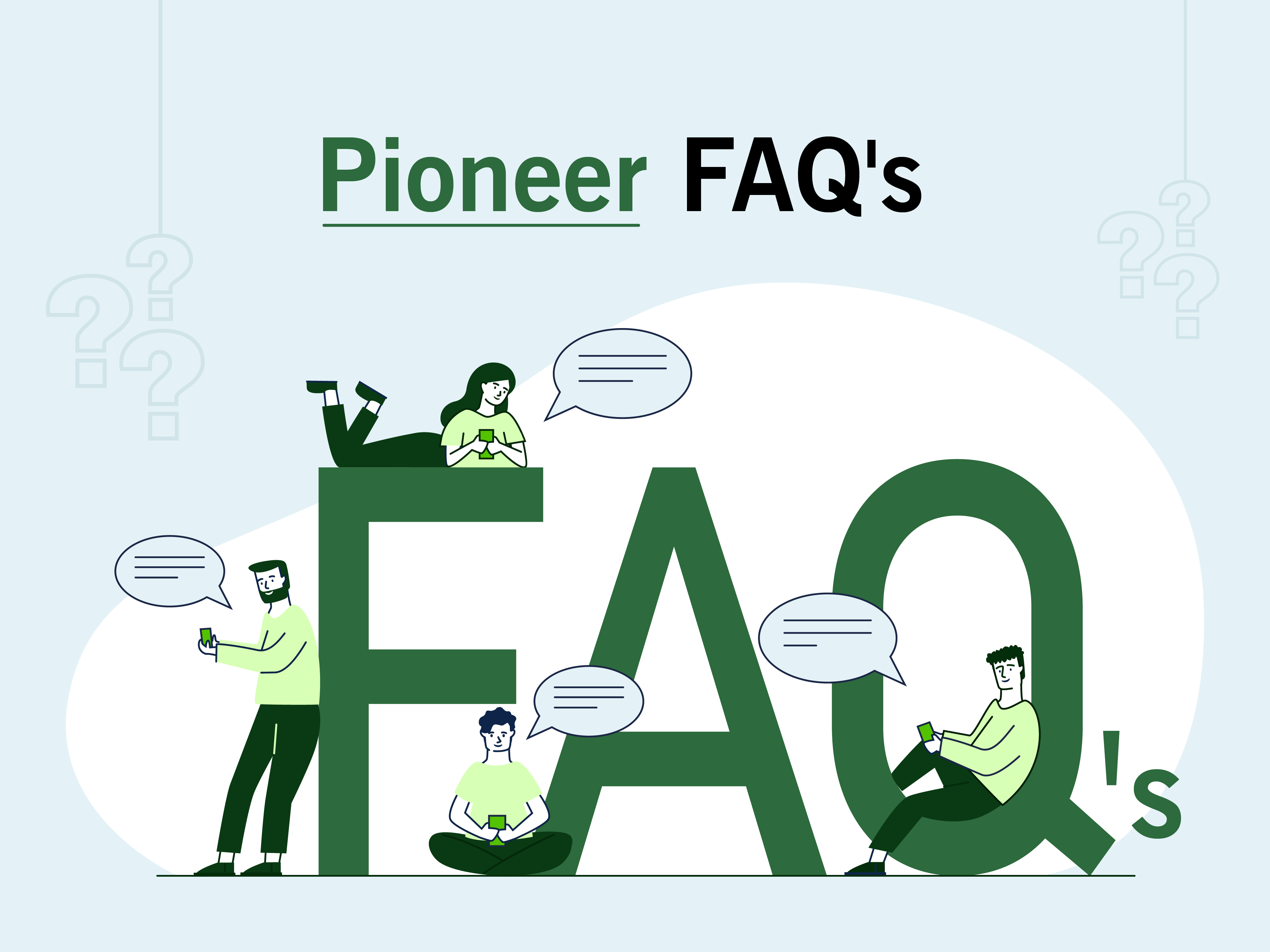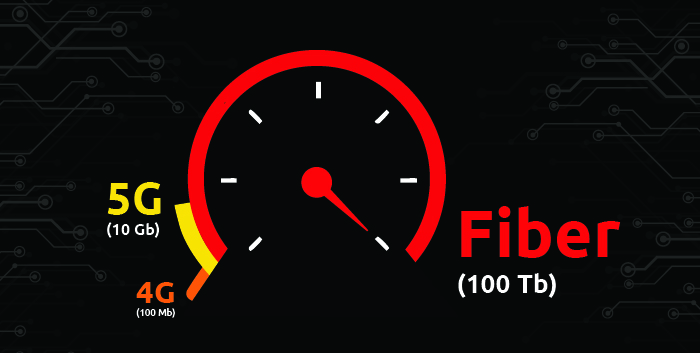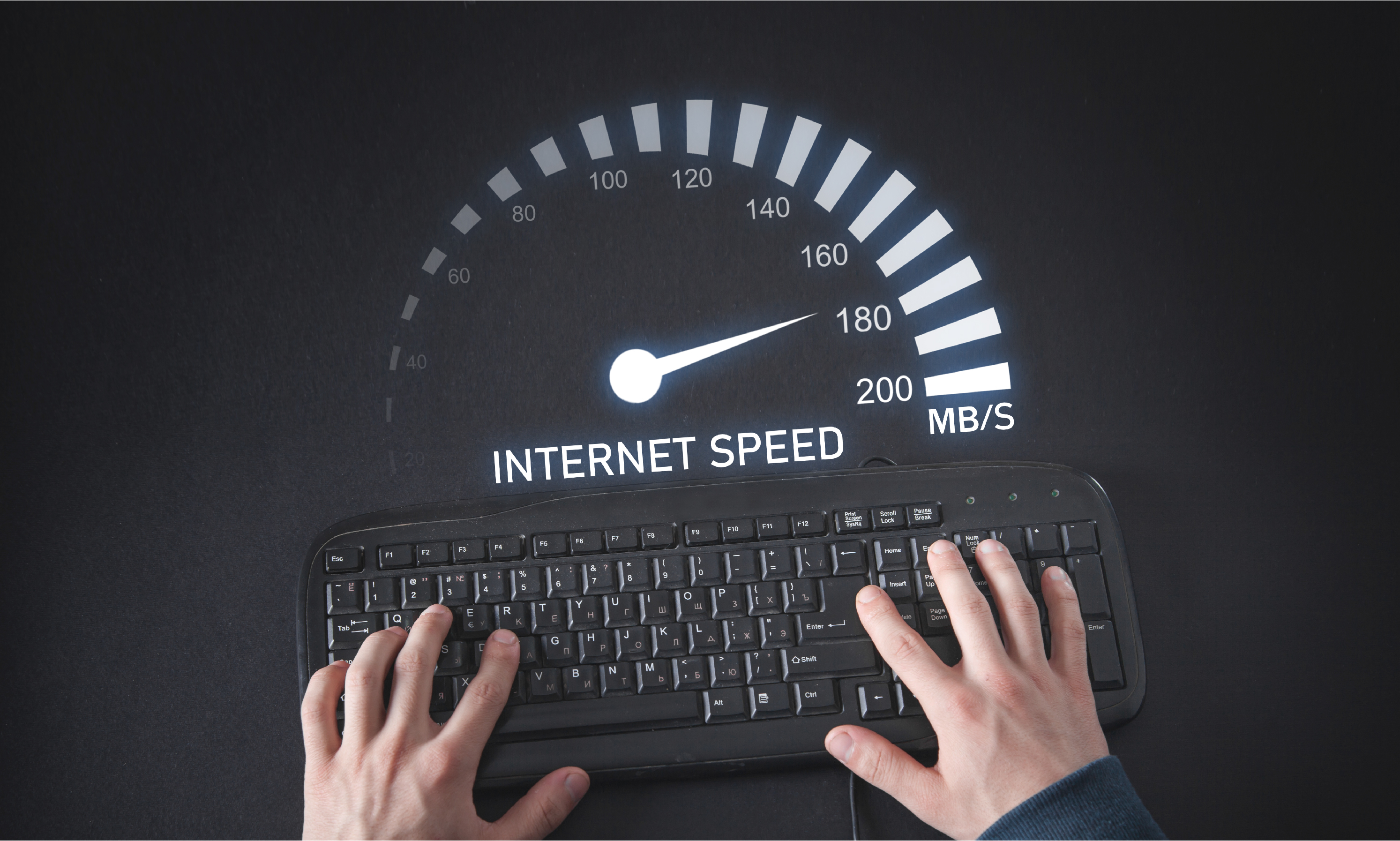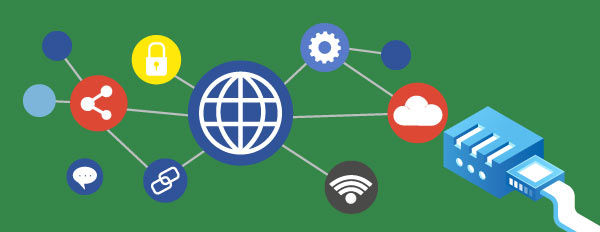Introduction: The Twin Pillars of Internet Performance
India's digital landscape has undergone a remarkable transformation in recent years, with internet connectivity becoming indispensable for both businesses and households across the nation. As of 2025, the median mobile internet download speed in India has reached an impressive 100.78 Mbps, while fixed internet connections average 63.55 Mbps. Despite these significant improvements, many users still experience frustration with certain applications performing poorly even on connections that are marketed as "fast."
The root of this disconnect often lies in a fundamental misunderstanding of bandwidth and latency – two distinct metrics that together determine your internet experience. While these terms are frequently used interchangeably, they measure completely different aspects of connection quality. For businesses making critical decisions about connectivity solutions or households trying to optimize their work-from-home setup, understanding this distinction has never been more important.
Your internet experience is shaped simultaneously by both how much data your connection can transfer (bandwidth) and how quickly that data travels (latency). Different online activities place different demands on these two metrics. Video streaming services like Netflix and Amazon Prime primarily demand high bandwidth, while video conferencing and online gaming require low latency for optimal performance. This distinction becomes particularly crucial as India's digital economy continues to expand, with remote work becoming a permanent fixture for many professionals across Delhi, Mumbai, Chennai, and other metropolitan centers.
The Telecom Regulatory Authority of India (TRAI) has recognized this evolving landscape by implementing new standards for both metrics, acknowledging that a truly quality internet experience depends on optimizing both parameters rather than focusing solely on advertised speeds. As fiber networks expand across urban centers and 5G deployment accelerates throughout the country, Indian internet users now have more options than ever – making it essential to understand which performance metrics matter most for your specific needs.
What is Bandwidth? Defining Data Capacity
Bandwidth refers to the maximum amount of data your internet service provider can transfer from one point to another within a specific timeframe. In essence, bandwidth determines the volume of information that can move through your connection simultaneously. Think of bandwidth as a highway – the wider the road, the more cars (data) can travel at the same time.
How Bandwidth is Measured in India
In the Indian market, bandwidth is typically measured in Megabits per second (Mbps) or Gigabits per second (Gbps), representing the total amount of data that can be downloaded or uploaded per second. When you purchase an internet plan advertised as "100 Mbps," this number primarily refers to the connection's bandwidth capacity. It's important to note that bandwidth is often asymmetric, with download speeds typically being significantly higher than upload speeds, though some premium fiber providers now offer symmetric connections.
TRAI's Bandwidth Categories: Basic, Fast, and Superfast
The Telecom Regulatory Authority of India has established clear categories to classify broadband connections across the country:
- Basic: 2-50 Mbps
- Fast: 50-300 Mbps
- Superfast: Greater than 300 Mbps
Currently, most Indian fixed broadband connections sit at the boundary between "Basic" and "Fast" broadband categories. Notably, TRAI regulations now mandate that ISPs clearly indicate the typical download and upload speeds available to customers when they recharge their wireless broadband plans, improving transparency in the market.
Current Bandwidth Benchmarks Across Major Indian Cities
Metropolitan areas in India enjoy significantly better broadband infrastructure than rural regions. While 65.1% of India's population lives in rural areas, these regions account for only 5.6% of total fixed broadband connections. More populous cities demonstrate higher bandwidth availability, with nearly half of connections in Delhi, Rajasthan, Tamil Nadu, Chandigarh, and Karnataka falling into at least the "Fast" category (>50 Mbps).
This urban-rural digital divide becomes particularly evident when examining bandwidth distribution. In cities like Mumbai, Bangalore, and Hyderabad, fiber-to-the-home (FTTH) connections delivering bandwidth in excess of 100 Mbps have become increasingly common, while many rural areas still struggle with basic connectivity options.
What is Latency? Understanding Network Delay
While bandwidth determines how much data can move at once, latency measures the time it takes for data to travel from one point to another – essentially, the delay in data transmission. This metric is critical for understanding why some applications feel responsive while others lag despite having sufficient bandwidth.
How Latency is Measured
Latency is measured in milliseconds (ms) and is sometimes referred to as "ping" during internet speed tests. Lower numbers indicate better performance – a 20ms latency is substantially better than 100ms. This time measurement becomes critical for time-sensitive applications where even small delays significantly impact performance.
For context, light travels approximately 300,000 kilometers per second, meaning that theoretical minimum latency is determined by physical distance. However, real-world network latency is typically much higher due to processing delays at various network points, routing inefficiencies, and equipment limitations.
New TRAI Standards for Latency in 2025
TRAI has recently tightened its quality of service standards for broadband networks:
- Wired networks must maintain latency below 50 milliseconds (effective October 1, 2024)
- Wireless broadband (4G/5G) must maintain latency below 75 milliseconds, further decreasing to below 50 milliseconds by 2026
These new standards represent a significant improvement from previous requirements, which allowed up to 250ms for wireless data services and 120ms for wireline broadband. Starting April 1, 2025, telecommunications companies must report all quality of service requirements monthly rather than quarterly, ensuring more timely resolution of network issues.
Jitter: The New QoS Parameter You Need to Know About
TRAI has introduced "jitter" as a quality of service parameter for broadband connections. Jitter measures latency variation above and below the mean latency value. This metric is particularly important for delay-sensitive applications like video conferencing, VoIP calls, and online gaming, where consistency in latency is often more important than raw speed.
High jitter values indicate an unstable connection where latency fluctuates significantly, creating unpredictable performance even when average latency appears acceptable. For professionals working remotely in cities like Delhi and Mumbai, low jitter values have become as important as low absolute latency.
Bandwidth vs. Latency: Key Differences Explained
The Highway Analogy: Width vs. Speed
A helpful way to understand the difference between bandwidth and latency is through a highway analogy:
- Bandwidth is like the width of the highway – how many lanes it has determines how many vehicles (data packets) can travel simultaneously
- Latency is like the speed limit – how fast each vehicle can move from start to destination
- Network congestion affects both metrics, similar to traffic jams slowing overall throughput
This analogy helps explain why a high-bandwidth connection might still perform poorly for certain applications if latency is high, and conversely, why some applications perform well on lower-bandwidth connections with excellent latency.
When High Bandwidth Matters Most
High bandwidth becomes essential when transferring large volumes of data:
- Downloading or uploading large files
- Streaming high-definition or 4K video content
- Supporting multiple simultaneous users on the same connection
- Cloud backup services and large database operations
For households in urban centers like Bangalore and Hyderabad with multiple streaming devices, smart home systems, and work-from-home requirements, bandwidth often becomes the primary consideration when selecting an internet plan.
When Low Latency is Critical
Low latency becomes the priority for real-time interactions:
- Online gaming, especially competitive multiplayer games
- Video conferencing and virtual meetings
- Voice over IP (VoIP) calls
- Financial trading platforms
- Remote desktop applications
- Cloud gaming services
For professionals working remotely or businesses engaged in time-sensitive operations, latency often has a more noticeable impact on productivity than bandwidth limitations.
Throughput: Where Bandwidth and Latency Intersect
Throughput refers to the actual amount of data being transferred over a set time period – essentially combining bandwidth and latency into a real-world performance metric. If you have high bandwidth but high latency, your throughput will suffer. Similarly, low latency with insufficient bandwidth will still create bottlenecks for data-intensive applications.
Understanding throughput helps explain why two connections with identical advertised bandwidth might deliver very different real-world performance. This metric is particularly relevant for businesses in commercial districts of Chennai, Kolkata and other major cities that depend on reliable data transfer for critical operations.
Real-World Applications: Balancing Bandwidth and Latency Needs
Remote Work Requirements
The work-from-home revolution has made balanced internet performance essential across India's urban centers. Video conferencing platforms like Zoom and Microsoft Teams require moderate bandwidth (3-5 Mbps) but are extremely sensitive to latency and jitter. For professionals in Delhi, Mumbai, and other major business centers, this means prioritizing connections that meet TRAI's new sub-50ms latency standards for consistent meeting quality.
A case study from Airtel's enterprise division revealed that companies implementing dedicated business lines with latency guarantees saw a 27% reduction in reported video conferencing issues compared to those relying on consumer-grade connections, even when bandwidth specifications were similar.
Video Streaming and Entertainment
Streaming platforms have become ubiquitous across urban India. While Netflix, Amazon Prime, and Disney+ Hotstar primarily demand high bandwidth for 4K content (25+ Mbps), they can buffer content to handle moderate latency. However, live streaming events (like IPL cricket matches) are much more sensitive to latency issues.
This distinction explains why some households report buffering during live events despite smooth playback of on-demand content. For high-quality streaming in multi-device households, bandwidth typically becomes the limiting factor, with TRAI's "Fast" category (50-300 Mbps) representing the sweet spot for most urban homes.
Online Gaming and Real-time Applications
India's gaming market continues to expand rapidly, especially in metropolitan areas. For gamers in Bangalore, Hyderabad, and other tech hubs, latency is often more important than raw bandwidth. Most modern games require only 5-10 Mbps bandwidth but demand latency under 50ms for competitive play – precisely matching TRAI's new standards for 2025.
Jio's gaming-optimized plans have recognized this market reality, advertising their network routes as specifically optimized for popular gaming servers to minimize latency rather than focusing exclusively on bandwidth numbers.
Business Applications and Cloud Services
For businesses utilizing SaaS applications and cloud infrastructure, both metrics matter significantly. Database operations may require high bandwidth, while user interface responsiveness depends heavily on low latency. This dual requirement explains why many businesses in commercial districts opt for dedicated business connections despite their higher cost.
ACT Fibernet's business solutions in Bangalore and Chennai have highlighted this dual optimization approach, offering not just high bandwidth but also dedicated routing to major cloud service providers to minimize latency for business-critical applications.
How Major Indian ISPs Compare: Bandwidth and Latency Analysis
Jio Fiber Performance Metrics
Reliance Jio has aggressively expanded its fiber network across major Indian cities. Their infrastructure approach has generally prioritized both bandwidth and latency optimization, with symmetric upload/download speeds being a significant advantage for work-from-home professionals. The competition between Jio's fiber offerings and their own 5G wireless services has created interesting market dynamics in 2025.
Jio's vertically integrated approach to network infrastructure has allowed them to maintain tight control over both bandwidth provisioning and latency optimization, resulting in some of the most consistent performance metrics across major metropolitan areas.
Airtel Xstream Fiber Analysis
Bharti Airtel has positioned its Xstream Fiber service as a premium offering with strong technical specifications. In the ongoing competition with Jio in 2025, Airtel has focused on network reliability and consistent latency metrics. Their enterprise solutions typically emphasize guaranteed minimum bandwidth alongside strict latency SLAs for business customers.
Airtel's investment in undersea cable infrastructure has given them particular advantages in international routing latency, which becomes significant for businesses connecting to global cloud services or international offices.
ACT Fibernet and Other Regional Providers
Regional players like ACT Fibernet maintain strong presences in specific markets like Bangalore, Chennai, and Hyderabad. These providers often demonstrate excellent localized optimization, sometimes achieving better city-specific latency than national operators due to their concentrated infrastructure investments.
ACT's city-focused approach has allowed them to build extremely dense fiber networks in their core markets, resulting in impressive "last mile" performance metrics that often translate to lower latency than competitors with more extensive but less dense national networks.
How to Optimize Your Connection: Practical Tips for Indian Users
Choosing the Right Connection Type for Your Needs
Different user profiles require different optimization priorities:
- Work-from-home professionals should prioritize connections with guaranteed low latency and moderate bandwidth
- Content creators need symmetric connections with high upload bandwidth
- Families with multiple streaming devices need high download bandwidth
- Gamers should prioritize low and stable latency over raw bandwidth
- Businesses should consider dedicated connections with SLAs for both metrics
Understanding your specific usage pattern allows for more targeted selection among the increasingly diverse offerings from Indian ISPs.
Troubleshooting High Latency Issues
If you're experiencing high latency despite sufficient bandwidth:
- Check for localized congestion during peak hours
- Consider upgrading router equipment, especially for larger homes
- Use wired connections for latency-sensitive applications
- Investigate potential "last mile" infrastructure limitations in your locality
- Run tests during different times of day to identify patterns
Many latency issues can be resolved through equipment upgrades or simple connection adjustments without necessarily requiring a change in service provider or plan.
When to Upgrade Your Bandwidth Plan
Upgrading to a higher bandwidth plan within the same ISP typically won't improve your latency. However, ISPs that offer higher-tier plans often maintain better infrastructure with less congestion, which can indirectly improve latency performance. When evaluating upgrades, consider both metrics rather than focusing solely on the bandwidth number.
Future Trends: The Evolution of Bandwidth and Latency in India
Upcoming TRAI Regulations and Their Impact
TRAI's increasingly strict quality of service requirements signal a maturing telecommunications market. The introduction of monthly reporting requirements (starting April 2025) and the focus on jitter as a new performance metric indicate that India's regulatory framework is evolving to address real-world user experience concerns rather than just theoretical speed capabilities.
These regulatory changes are likely to drive investment in infrastructure optimization beyond simple bandwidth expansion, benefiting consumers and businesses across major urban centers.
Emerging Technologies and Their Performance Implications
Several technologies on the horizon will impact both bandwidth and latency:
- Edge computing deployments will dramatically reduce latency for specific applications
- Wi-Fi 6E adoption will improve in-home wireless performance
- Expanded fiber rollouts will continue to reach more tier-2 and tier-3 cities
- Satellite internet services will address rural connectivity gaps, though with latency trade-offs
Conclusion: Making Informed Decisions About Your Internet Connection
As India's internet infrastructure continues to develop at a rapid pace, understanding the distinction between bandwidth and latency becomes increasingly important for making informed decisions about your connectivity needs. TRAI's new standards reflect a growing recognition that a truly quality internet experience requires optimization of both metrics, not just higher advertised speeds.
For users in Delhi, Mumbai, Bangalore, Hyderabad, Chennai, and Kolkata, this knowledge empowers you to select the right service for your specific requirements – whether that's crystal-clear video conferencing, buffer-free streaming, responsive gaming, or efficient business operations. By understanding these fundamental concepts, you can look beyond marketing claims and evaluate internet services based on the metrics that will truly impact your digital experience in 2025.
The continued expansion of fiber networks across urban India, combined with the accelerating rollout of 5G services, provides more connectivity options than ever before. Rather than simply choosing the plan with the highest advertised bandwidth, consider your actual usage patterns and which performance metric – bandwidth or latency – will have the greatest impact on your everyday internet experience.
For businesses, this understanding translates directly to productivity and operational efficiency. For households, it means better value for money and improved quality of experience across all digital activities. As India continues its digital transformation, the winners will be those who understand not just how much data they can transfer, but how quickly that data reaches its destination.
Ready to find the perfect balance of bandwidth and latency for your specific needs? Pioneer Online offers optimized broadband solutions for homes and businesses across major Indian cities, with plans specifically designed around both bandwidth and latency requirements. Our network engineers can analyze your usage patterns and recommend the ideal configuration for your unique situation. Explore our broadband solutions today and experience the difference that truly optimized connectivity can make.



























































